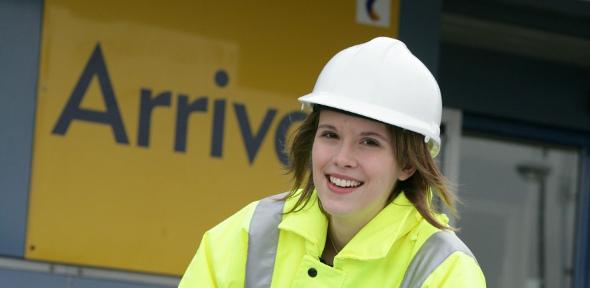
The engineering sector is calling for more female recruits. Despite bright ideas and bold initiatives designed to attract more women into science, engineering and technology (SET), statistics prove that the gender gap is not lessening.
One of the problems is the reducing numbers of students, both male and female, willing to study maths and physics, which is the precursor to getting into engineering.
Dr Sue Ion
Nationally, the proportion of women opting to study engineering and technology at degree level is static at around 15 per cent. However, this does not reflect a simple humanity/science divide as men no longer dominate all SET subjects at degree level; biological sciences boast an impressive 63 per cent female studentship, physical sciences attract 41 per cent women and computer sciences manage 17 per cent.
"One of the problems is the reducing numbers of students, both male and female, willing to study maths and physics, which is the precursor to getting into engineering," says Dr Sue Ion, vice president of the Royal Academy of Engineering and former director of technology at British Nuclear Fuels.
The difficultly in attracting women to engineering appears to be one of image and the misconception that engineering is synonymous with car mechanics and greasy overalls.
Helen Randell is studying engineering at Cambridge, where 27 per cent of the students on the engineering courses are female, well above the national percentage of female studentship. She picked the programme after attending Headstart, one of a number of education programmes run by the Engineering Development Trust. Headstart, says Helen, opened her eyes to the possibility that engineering could be a "legitimate career choice".
She followed this up with a Year In Industry placement at Nottingham East Midlands Airport, where she was charged with extending the existing fire training rig. "This really confirmed that I wanted to do engineering," she says. "I like the fact you're doing something different everyday and have to come up with new solutions all the time."
Helen has chosen to specialise in civil and structural engineering and spent last summer's placement working on a junction of the A1. "People think I'm mad because I am so excited about this," she says. "But I can now drive up the A1 and point to the junction and say I did that."
This is the real satisfaction of a career in engineering: coming up with practical solutions, be it traffic flow or global warming. Helen says it's frustrating that so many young women don't even consider it as a career. "They are losing out on so many opportunities," she says. "Once you have a go you find it's so different from how you imagine it to be."
Despite the more promising figures in some SET subjects, we must not become complacent. The general picture in Cambridge is one of continuing under-representation of women in SET. There has been little significant change to the occupational hierarchy in all these disciplines where numbers of women fall away at each level (undergraduate, graduate, post-doctoral, permanent staff), whether the baseline is low (e.g. in engineering) or high (e.g. biochemistry).
To help address this problem, the University has become a Gold Sponsor of Cambridge Association for Women in Science and Engineering (AWiSE). Our sponsorship will allow AWiSE to continue providing support, inspiration and information to women working in SET. The University actively encourages female staff and students in SET through our Women in Science, Engineering and Technology Initiative (WiSETI). WiSETI's remit is to improve the number of women studying SET, improve the retention and promotion rates of women in SET and to raise their profile and increase their self-confidence.

